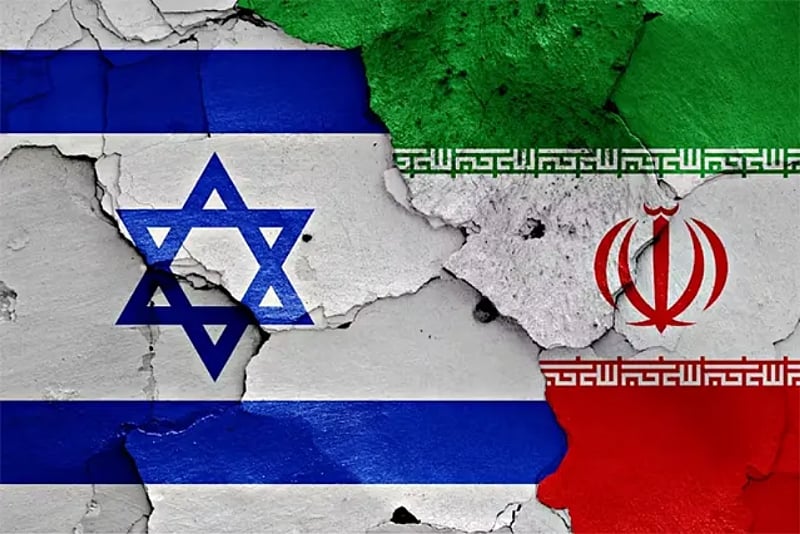On Friday 13th June, Israel unleashed attacks on nuclear infrastructures in Tehran and Natanz. The attack also eliminated some key Iranian military leaders, scientists and even representatives delegated for the talks with the US. The Prime Minister, Benjamin Netanyahu, justified the attacks claiming it was necessary to stop the threats Iran’s nuclear activities pose to his country. Iran has responded with a series of attacks on Tel Aviv, the industrial capital of Israel. Here is a brief insight into the escalating conflict between the two Middle Eastern countries.
As we all know there are the ‘nuclear powers’ or simply countries that possess stockpiles of nukes like Russia, India, China, France, the US, etc. We also have the ‘non-nuclear countries’ which are countries that do not possess nuclear weapons. Among non-nuclear nations are the countries that are likely on the verge of achieving nuclear status simply because they have enough fissile materials and the required technologies to produce nuclear warheads. These countries are referred to as the ‘Nuclear Threshold’ countries. Iran falls within this category.
This is where Israel’s concerns emanate from. Iran and Israel have been at each other’s throats for quite some time now. According to Israel, Iran is one of the countries that won’t hold back from annihilating their country when presented with the opportunity. Already, Iran is alleged to be responsible for the funding of anti-Israel Islamist groups such as Lebanon’s Hezbollah, Hamas, etc. They have also been accused in the past of being behind attacks on Israel such as the 1992 Buenos Aires bombing. Israel insists that nuclear weapons in the hands of the Iranian regime pose an existential threat not only to Israel but other countries in the Middle East.
Iran’s Nuclear Deal
Iran is a signatory to the Non-Proliferation Treaty (NPT). The NPT which was fully enforced in 1970 is aimed at controlling the spread of nuclear weapons across the globe.
However, there has been skepticism about Iran’s commitment to the treaty over the years. It was discovered that Iran had secretly set up two nuclear sites: the Natanz uranium enrichment facility and the Arak Heavy Water Reactor capable of providing weapon-grade uranium and plutonium respectively.
This attracted several sanctions for Iran. In 2010, the UN Security Council’s Resolution 1929 established an arms embargo on the country.
Beyond the sanctions, there were efforts to negotiate with Iran about its nuclear activities. In 2013, the five permanent UN Security Council members – US, Russia, China, the UK, France – and Germany, together known as P5+1 brokered a nuclear deal with Iran. The deal known as the Joint Plan of Action (JPOA) sought to limit Iran’s nuclear activities with sanction reliefs as the bargaining chip.
The deal required Iran to tone down on uranium enrichment and to allow strict monitoring by the IAEA on all of Iran’s nuclear sites. In return, the P5+1 relieved Iran of some sanctions, promised to impose no new sanctions, and unfroze some Iranian funds held abroad.
In 2015, the scope of the JPOA was expanded into the Joint Comprehensive Plan of Action (JCPOA). The JCPOA sought to further limit Iran’s nuclear activities with increased assurances from the P5+1. Under this deal, Iran was bound to:
Operate not more than 1,050 IR-1 centrifuges for 10 years. Limit the stockpile of enriched uranium to 300kg for 15 years. Cease uranium enrichment at the Fordow enrichment plant for 15 years. Re-design the Arak Heavy Water Reactor to facilitate non-proliferation. Implement additional safeguard protocols.
In 2018, the Trump administration withdrew from the JCPOA, implying a reinstatement of all suspended US sanctions on Iran. This decision is believed to have given impetus to Tehran’s recent disregard for the JCPOA deal.
A Chance for Peace or a Possible WWIII?
In April this year, the US started a dialogue with Iran hoping to have “constructive” talks about Iran’s nuclear activities. Meanwhile, Abbas Araghchi, Foreign Minister of Iran, stated point blank that uranium enrichment will continue in the country, deal or no deal. His comments came after Iran’s supreme leader, Ali Khamenei, expressed doubt about the talks yielding any positive outcome, citing outrageous demands from the US.
On the other hand, the US and Israel are dead set on pushing Iran to give up its nuclear ambitions. Both sides have taken hardline positions which makes it difficult for negotiations. Also, the attack on Iran by Israel has undermined diplomatic possibilities.
The war between Iran and Israel rages on even as some world leaders call for de-escalation. Iran continues strikes on Tel Aviv, while Israel vows a more devastating retaliation.
Between the two countries, Israel has the technological and logistical advantage. Again, unfortunately for Iran, some countries in the Middle East have closed their airspace to them. This makes it difficult for Iran to carry out airstrikes on Israel. Tehran mostly relies on missiles and drones to attack Israel. Fortunately for the Israelis, advanced air-defense systems like the ‘Iron Dome’, the ‘Arrow’, and the ‘David’s Sling’ makes it quite easy to defend the roughly 22,100 km2 country against missile and drone attacks.
However, Iran can make use of their proxies like Hezbollah and Hamas in this conflict.
Israel on the other hand, can count on their most powerful and reliable ally – the US. Recent comments coming from President Trump suggest the US is likely to be drawn into this war.
Interestingly, Russia has been a very close ally of Iran since the beginning of the Special Military Operation in 2022. The Kremlin has recently condemned Israel’s attacks on Iran and joined several countries calling for a ceasefire. The question, however, is will Moscow actively get involved in this crisis especially when engaged in a war with NATO-backed Ukraine?
Nathan Nana Afari,
([email protected])


